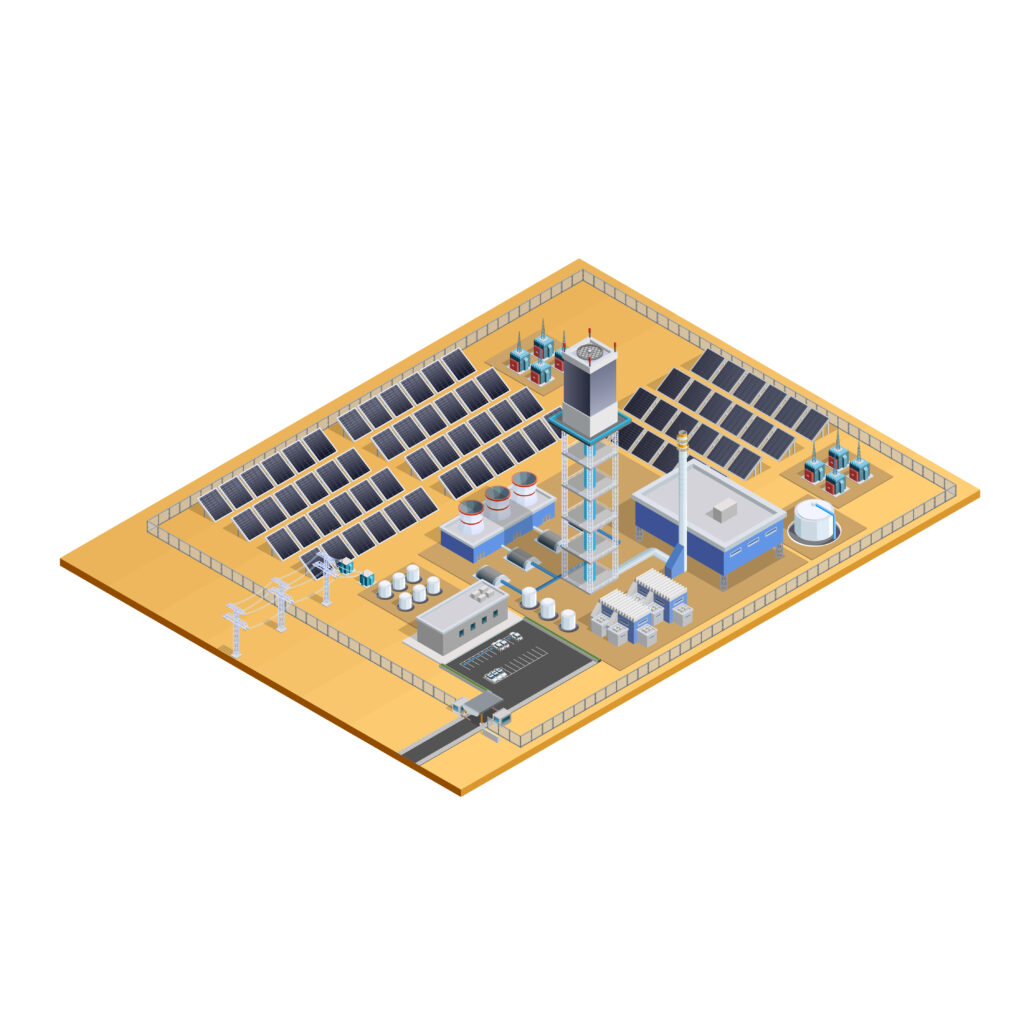Table of Contents
Discover the ten powerful advantages of scaling microgrids and how they empower energy resilience and sustainability. Explore the benefits of enhanced reliability, increased energy efficiency, integration of renewable energy sources, and more. Learn how microgrids offer localized energy generation, flexibility, and grid independence. Find out how scaling microgrids accelerate the transition to a low-carbon future.

Introduction
Scaling microgrids revolutionizes the energy landscape, offering a decentralized approach to energy generation, distribution, and consumption. In this article, we will explore the ten powerful advantages of scaling microgrids and their role in empowering energy resilience and sustainability. From enhanced reliability and increased energy efficiency to the integration of renewable energy sources, microgrids pave the way for a greener and more resilient future.
Enhanced Energy Reliability and Resilience
- Ensuring Uninterrupted Power Supply: Scaling microgrids utilize a distributed network of energy sources to provide localized power supply, ensuring uninterrupted electricity even during grid failures or natural disasters. Hospitals, military bases, and remote communities benefit from this enhanced reliability.
- Reducing Dependency on Centralized Grids: Microgrids reduce reliance on centralized grids, minimizing the risk of disruptions caused by grid failures or maintenance. By diversifying energy sources and distribution, microgrids enhance energy resilience.
- Minimizing Disruptions during Grid Failures: During grid failures, microgrids continue to operate autonomously, providing uninterrupted power. This advantage is critical for maintaining essential services and ensuring the safety and well-being of communities.
Increased Energy Efficiency and Cost Savings
- Optimizing Resource Allocation and Management: Scaling microgrids integrate advanced control algorithms and monitoring systems to optimize resource allocation, ensuring efficient energy utilization. By intelligently balancing supply and demand, microgrids minimize wastage and enhance energy efficiency.
- Minimizing Wastage through Advanced Control Algorithms: Microgrids employ advanced control algorithms to monitor energy consumption patterns, enabling proactive energy management. This optimization minimizes wastage, reduces unnecessary energy consumption, and translates into significant cost savings.
- Reducing Reliance on Fossil Fuels and Peak-Demand Pricing: By incorporating renewable energy sources, microgrids reduce dependence on fossil fuels. This shift not only contributes to sustainability but also mitigates the impact of peak-demand pricing, lowering energy costs for consumers.
Integration of Renewable Energy Sources
- Harnessing Solar, Wind, and Hydroelectric Power: Microgrids seamlessly integrate renewable energy sources such as solar, wind, and hydroelectric power. This integration helps reduce greenhouse gas emissions, mitigates climate change, and ensures a sustainable energy future.
- Reducing Greenhouse Gas Emissions: Scaling microgrids promote the adoption of clean energy sources, significantly reducing greenhouse gas emissions. By transitioning from fossil fuels to renewables, microgrids play a crucial role in mitigating climate change and preserving the environment.
- Promoting a Sustainable Energy Future: The integration of renewable energy sources in microgrids contributes to a sustainable energy future. It reduces dependence on non-renewable resources, diversifies the energy mix, and lays the foundation for a greener and more resilient energy system.
Localized Energy Generation and Community Empowerment
- Energy Independence and Resilience: Scaling microgrids empower communities to generate their own energy locally, reducing dependence on centralized grids. This energy independence enhances resilience, ensuring access to electricity during emergencies and supporting critical infrastructure.
- Fostering Ownership and Economic Opportunities: Microgrids encourage community participation and ownership, fostering a sense of responsibility and empowerment. Additionally, they create economic opportunities through job creation in the renewable energy sector and community-based energy projects.
- Strengthening Community Engagement: Localized energy generation through microgrids strengthens community engagement. By involving residents in decision-making processes and promoting awareness of energy usage, microgrids foster a sustainable energy culture.
Flexibility and Adaptability to Changing Energy Needs
- Adjusting Energy Generation and Distribution: Microgrids offer flexibility to adapt energy generation and distribution based on changing needs. As demand patterns shift, microgrids can adjust their energy supply, ensuring efficient resource utilization and minimizing grid stress.
- Integration of Emerging Technologies: Scaling microgrids facilitate the integration of emerging technologies such as electric vehicles and energy storage systems. This integration enhances the efficiency of energy systems and promotes the adoption of innovative solutions for a sustainable future.
- Ensuring Efficient Resource Utilization: Microgrids optimize resource utilization by balancing energy supply and demand in real-time. This approach minimizes energy wastage, enhances system performance, and supports sustainable energy management practices.
Reduced Transmission and Distribution Losses
- Minimizing Energy Wastage: Traditional centralized power systems suffer from transmission and distribution losses, resulting in energy wastage. Scaling microgrids minimize these losses by reducing the distance between energy generation and consumption, enhancing overall energy efficiency.
- Enhancing Energy Efficiency: Microgrids optimize energy distribution within localized networks, minimizing transmission and distribution losses. This efficiency improvement leads to reduced energy waste and promotes a more sustainable and cost-effective energy system.
- Lowering Environmental Impact: By minimizing energy wastage and improving energy efficiency, microgrids help lower the environmental impact associated with energy generation and consumption. This reduction in greenhouse gas emissions contributes to a cleaner and healthier planet.
Grid Independence and Decentralization
- Reducing Reliance on Centralized Grid Infrastructure: Microgrids reduce reliance on large-scale centralized grid infrastructure, promoting grid independence and decentralization. This decentralized approach ensures localized power supply and minimizes the vulnerability of communities to grid failures.
- Promoting Energy Autonomy: By reducing dependency on external energy sources, microgrids enable communities to achieve energy autonomy. This independence fosters self-sufficiency, resilience, and the ability to meet local energy demands efficiently.
- Enabling Localized Decision-Making: Scaling microgrids empower communities to make localized decisions regarding their energy systems. This localized decision-making enables tailored solutions, improved grid management, and better alignment with community needs.
Enhanced Grid Stability and Security
- Ensuring Continuity during Grid Disturbances: Microgrids provide enhanced grid stability by distributing energy generation and storage across multiple points. This distribution ensures continuity of electricity supply, especially during grid disturbances caused by natural disasters, accidents, or maintenance activities.
- Safeguarding Essential Services and National Security: Critical facilities such as hospitals, military installations, and emergency services rely on microgrids to maintain uninterrupted power supply. This safeguarding of essential services contributes to national security and public safety.
- Mitigating Risks of Cyberattacks: Microgrids, with their distributed nature, offer resilience against cyberattacks. By reducing dependency on centralized infrastructure, microgrids provide an additional layer of security, protecting against potential cyber threats.
Enabling Electrification of Remote Areas
- Bridging the Energy Gap in Underserved Regions: Scaling microgrids enable the electrification of remote areas that lack access to reliable electricity. By providing localized energy solutions, microgrids bridge the energy gap and improve the quality of life for communities in these underserved regions.
- Providing Sustainable and Cost-effective Energy Solutions: Microgrids offer sustainable and cost-effective energy solutions for off-grid or underserved areas. By incorporating renewable energy technologies and energy storage systems, microgrids provide reliable and clean electricity to support socio-economic development.
- Driving Socio-economic Development: Access to electricity through microgrids unlocks opportunities for socio-economic development. Reliable power enables businesses to thrive, educational institutions to function, and healthcare facilities to provide critical services, ultimately improving the overall well-being of communities.
Accelerating the Transition to a Low-Carbon Future
- Reducing Greenhouse Gas Emissions: Scaling microgrids contribute significantly to the reduction of greenhouse gas emissions. By integrating renewable energy sources, microgrids help shift the energy landscape away from fossil fuels, mitigating climate change and supporting global sustainability goals.
- Combating Climate Change: Microgrids play a vital role in combating climate change by reducing reliance on carbon-intensive energy sources. By facilitating the integration of renewable energy technologies, microgrids support the transition to a low-carbon future and contribute to a more sustainable planet.
- Fostering a Cleaner and Healthier Planet: The adoption of microgrids accelerates the transformation towards a cleaner and healthier planet. By enabling sustainable energy solutions and reducing environmental impact, microgrids support the well-being of ecosystems and future generations.
Conclusion
Scaling microgrids offer a multitude of advantages that empower energy resilience and sustainability. From enhanced reliability and cost savings to the integration of renewable energy sources and localized community empowerment, microgrids are revolutionizing the energy landscape. With their flexibility, adaptability, and potential to accelerate the transition to a low-carbon future, microgrids represent a key solution in shaping an electric future that is environmentally friendly, economically viable, and socially equitable. As we continue to embrace sustainable technologies, scaling microgrids will play a pivotal role in creating a more resilient and sustainable energy system for generations to come.
FAQs (Frequently Asked Questions)
- Q: What are microgrids?
- A: Microgrids are localized energy systems that generate, distribute, and consume electricity independently or in coordination with the main power grid. They incorporate a mix of energy sources, including renewable energy technologies, and offer enhanced reliability and resilience.
- Q: How do microgrids enhance energy resilience?
- A: Microgrids enhance energy resilience by utilizing a distributed network of energy sources. During grid failures or natural disasters, microgrids can provide uninterrupted power supply, ensuring critical services and reducing dependency on centralized grids.
- Q: What are the benefits of scaling microgrids?
- A: Scaling microgrids offers numerous benefits, including enhanced energy reliability, increased energy efficiency, integration of renewable energy sources, localized energy generation, flexibility, grid independence, and accelerated transition to a low-carbon future.
- Q: How do microgrids contribute to sustainability?
- A: Microgrids contribute to sustainability by reducing greenhouse gas emissions, promoting renewable energy sources, minimizing energy wastage, and supporting the transition to a low-carbon energy system.
- Q: Can microgrids be used in remote areas without access to reliable electricity?
- A: Yes, microgrids are particularly valuable in remote areas lacking access to reliable electricity. They can provide localized and sustainable energy solutions, bridging the energy gap and supporting socio-economic development.
- Q: Are microgrids secure against cyberattacks?
- A: Microgrids, with their distributed nature, offer enhanced security against cyberattacks compared to centralized grids. By reducing reliance on a single point of failure, microgrids provide additional resilience against potential cyber threats.

